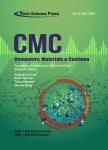Flexible Memristive Devices Based on Graphene Quantum-Dot Nanocomposites
作者机构:Department of System Semiconductor EngineeringSangMyung UniversityCheonan-si31066Korea
出 版 物:《Computers, Materials & Continua》 (计算机、材料和连续体(英文))
年 卷 期:2022年第72卷第8期
页 面:3283-3297页
核心收录:
学科分类:08[工学] 0805[工学-材料科学与工程(可授工学、理学学位)] 0812[工学-计算机科学与技术(可授工学、理学学位)]
主 题:Memristive devices neuromorphic chip resistive RAM quantum dot graphene
摘 要:Artificial neural networks(ANNs)are attracting attention for their high performance in various fields,because increasing the network size improves its functioning.Since large-scale neural networks are difficult to implement on custom hardware,a two-dimensional(2D)structure is applied to an ANN in the form of a crossbar.We demonstrate a synapse crossbar device from recent research by applying a memristive system to neuromorphic chips.The system is designed using two-dimensional structures,graphene quantum dots(GQDs)and graphene oxide(GO).Raman spectrum analysis results indicate a D-band of 1421 cm^(−1) that occurs in the disorder;band is expressed as an atomic characteristic of carbon in the sp2 hybridized structure.There is also a G-band of 1518 cm^(−1) that corresponds to the graphite structure.The G bands measured for RGO-GQDs present significant GQD edge-dependent shifts with position.To avoid an abruptly-formed conduction path,effect of barrier layer on graphene/ITO interface was investigated.We confirmed the variation in the nanostructure in the RGO-GQD layers by analyzing them using HR-TEM.After applying a negative bias to the electrode,a crystalline RGO-GQD region formed,which a conductive path.Especially,a synaptic array for a neuromorphic chip with GQDs applied was demonstrated using a crossbar array.



